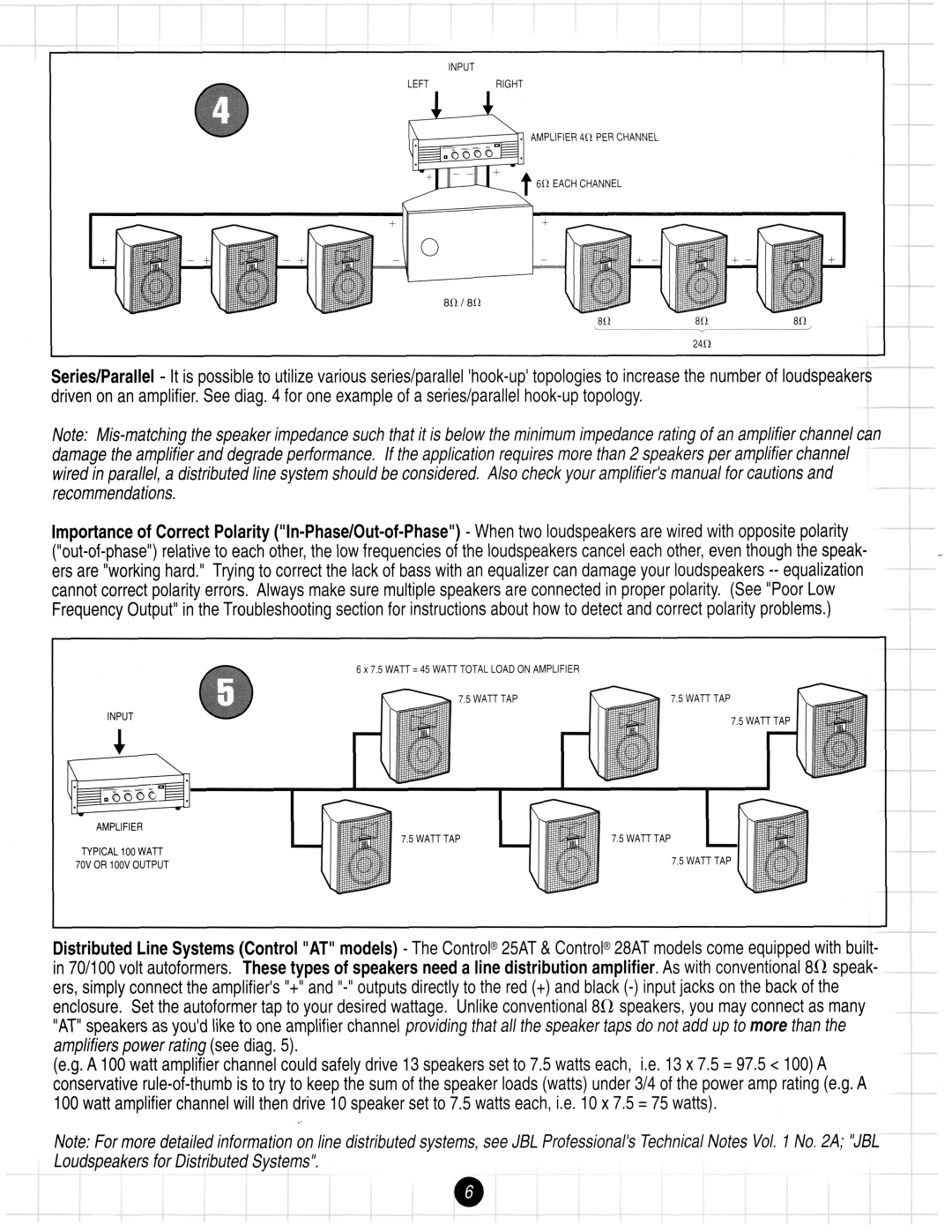INPUT
LEFTRIGHT
AMPLIFIER 4Cl PER CHANNEL
6.n EACH CHANNEL
--
SerieslParallel - It is possible to utilize various serieslparallel 'hook-up' topologies increase the number of loudspea driven on an amplifier. See diag. 4 for one example of a serieslparallel hook-up topology.
Note: Mismatching the speaker impedance such that it is below the minimum impedance rating of an amplifier channel damage the amplifier and degrade performance. If the application requires more than 2 speakers per amplifier channel wired in parallel, a distributed line system should be considered. Also check your amplifier's manual for cautions and recommendations.
Importance of Correct Polarity ("In-Phaselout-of-Phase")-When two loudspeakers are wired with opposite polarity ("out-of-phase") relative to each other, the low frequencies of the loudspeakers cancel each other, even though the speak- ers are "working hard." Trying to correct the lack of bass with an equalizer can damage your loudspeakers --equalization cannot correct polarity errors. Always make sure multiple speakers are connected in proper polarity. (See "Poor Low Frequency Output" in the Troubleshooting section for instructions about how to detect and correct polarity problems.)
-
Distributed Line Systems (Control "AT" models) - The Control@25AT & Control@28AT models come equipped with in 701100 volt autoformers. These types of speakers need a line distribution amplifier. As with conventional 8 Q s ers, simply connect the amplifier's"t"and "-" outputs directly to the red (t) and black (-) input jacks on the back of the enclosure. Set the autoformer tap to your desired wattage. Unlike conventional 8 f l speakers, you may connect as many "AT" speakers as you'd liketo one amplifier channel providing that all the speaker taps do not add up to more than the amplifierspower rating (see diag. 5).
(e.g. A 100 watt amplifier channel could safely drive 13 speakers set to 7.5 watts each, i.e. 13 x 7.5 = 97.5 < 100)A conservative rule-of-thumb is to try to keep the sum of the speaker loads (watts) under 314 of the power amp rating (e.g. A 100 watt amplifier channel will then drive 10 speaker set to 7.5 watts each, i.e. 10 x 7.5 = 75 watts).

